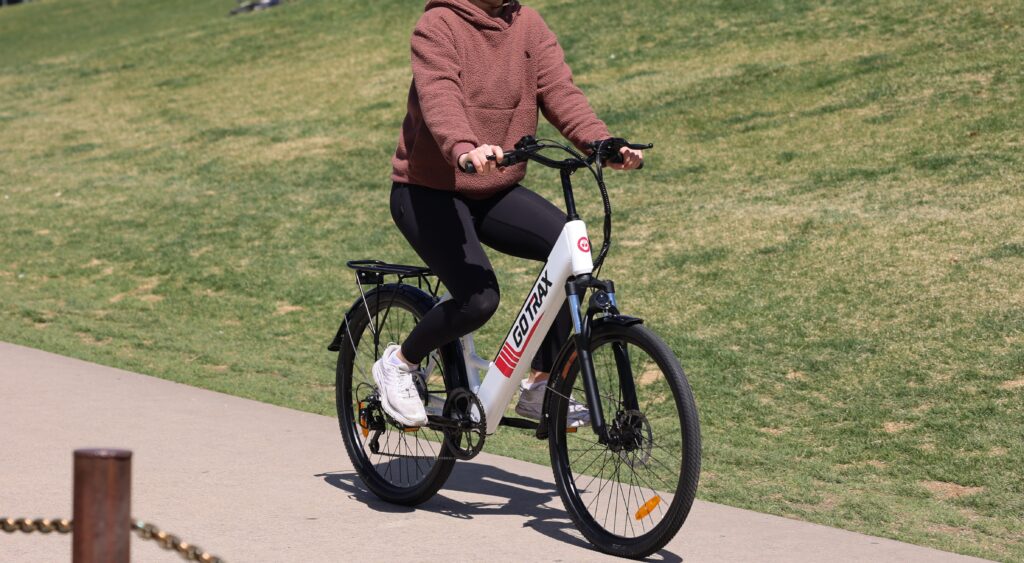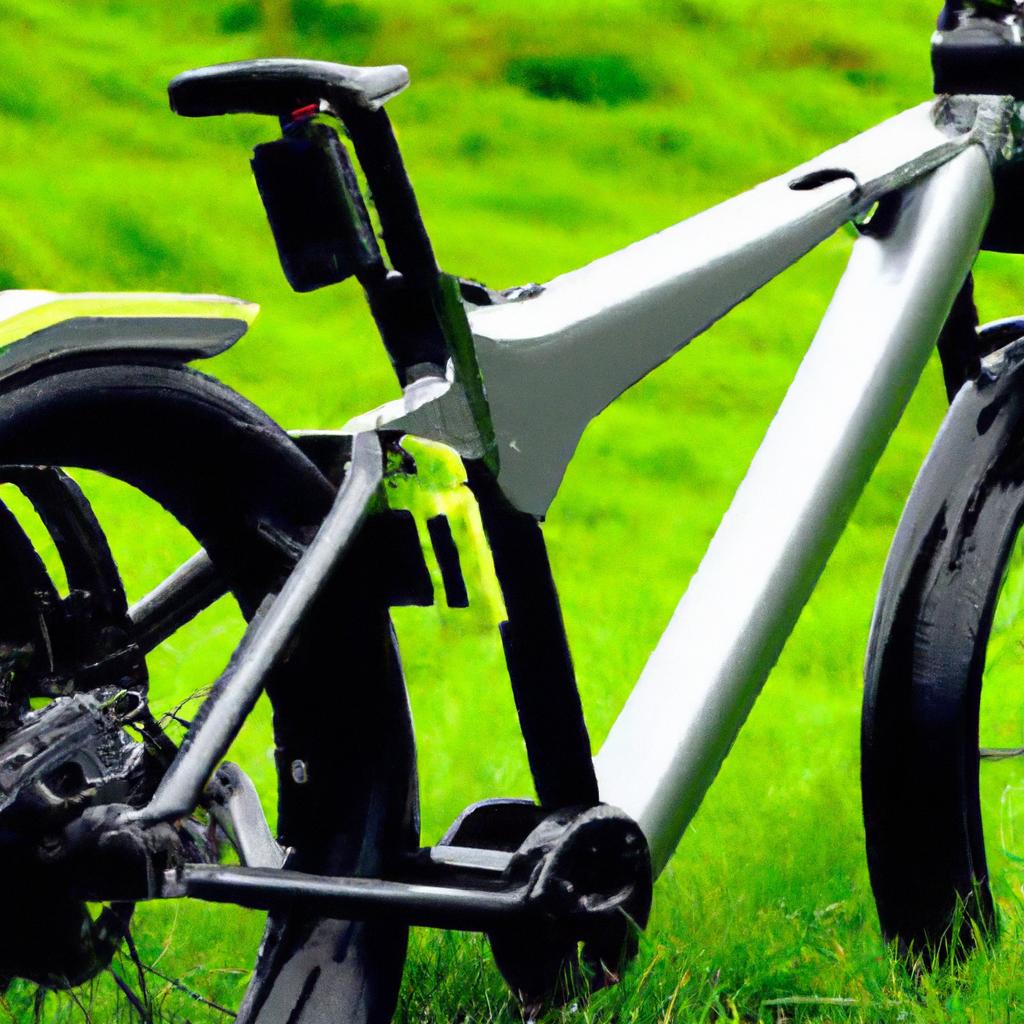Are you an experienced e-bike rider looking to take your skills to the next level? If so, you’re in the right place! In this article, we will dive deep into the world of e-bikes, specifically focusing on the comparison between speed pedelecs and regular e-bikes. Whether you’re a commuter, a mountain biker, or a touring enthusiast, understanding the differences between these two types of e-bikes is crucial for getting the most out of your rides. So buckle up, because we’re about to explore the intricate technical aspects that set these machines apart and help you choose the perfect one for your riding style.
I. Introduction
Hey there, E-Bike enthusiasts! Welcome to our “Advanced E-Bike Riding Tips” section, a dedicated space for riders who are ready to go beyond the basics. Our aim here is not just to introduce you to advanced riding techniques but also to guide you through intricate technical aspects of e-biking. Here you’ll find everything from advanced security measures to extreme uphill climbing techniques—content designed for those who are serious about e-biking and want to get the most out of their rides.
II. Understanding Speed Pedelecs
A. Definition
Speed Pedelecs, also known as S-Pedelecs, are a type of electric bicycle that provides assistance through a motor when pedaling. These bikes are designed to reach higher speeds than traditional e-bikes, offering a combination of pedaling power and motor assistance.
B. Features and Components
Speed Pedelecs typically come equipped with a powerful electric motor that can assist the rider up to a certain speed, often around 28 mph (45 km/h). They generally have a larger battery capacity to support the higher speed and longer riding distances. Other components include a frame, wheels, brakes, gears, and controls, similar to traditional bicycles.
C. Advantages and Disadvantages
One of the main advantages of Speed Pedelecs is their ability to reach higher speeds, allowing for faster commutes and longer trips. They provide an efficient and eco-friendly alternative to cars and public transportation. However, their increased speed and power can also present certain challenges, such as the need for additional safety precautions and adherence to specific regulations.
D. Examples of Speed Pedelecs
Some popular examples of Speed Pedelecs include the Stromer ST5, Riese & Müller Supercharger2 GT Touring, and Specialized Turbo Vado SL. These bikes offer advanced technology, durable construction, and excellent performance for riders seeking high-speed e-biking experiences.

III. Exploring E-Bikes
A. Definition
E-Bikes, short for electric bikes, are bicycles equipped with an electric motor that provides assistance while pedaling. This motor can be activated through a throttle or a sensor that detects the rider’s pedaling motion.
B. Features and Components
E-Bikes come in various styles and designs, including mountain bikes, commuter bikes, and folding bikes. They typically feature a lightweight frame, wheels, brakes, gears, and a battery to power the electric motor. Some models also offer additional features such as built-in lights, fenders, and cargo racks.
C. Advantages and Disadvantages
E-Bikes offer several advantages, including easier uphill climbs, reduced effort during long rides, and the ability to cover greater distances in less time. They provide a greener alternative for transportation and promote a more active lifestyle. However, they may require charging and maintenance of the electric components, and their initial cost can be higher compared to traditional bicycles.
D. Examples of E-Bikes
Popular examples of E-Bikes include the RadPower Bikes RadRover, Trek Powerfly, and Giant Quick-E+. These bikes cater to different purposes and preferences, ranging from off-road adventures to daily commuting, and offer a wide range of features to suit various riding styles.
IV. Power and Speed
A. Power Systems
Speed Pedelecs and E-Bikes utilize different power systems. Speed Pedelecs often use a larger motor and a higher voltage battery to allow for increased speed and performance. E-Bikes, on the other hand, have smaller motors and batteries designed for a lower top speed and longer range.
B. Speed Limits
Speed Pedelecs typically have higher speed limits compared to E-Bikes. While regulations may vary, many countries require Speed Pedelecs to have a motor assistance cutoff at speeds above 28 mph (45 km/h). E-Bikes, on the other hand, often have speed limits ranging from 15-20 mph (24-32 km/h).
C. Acceleration and Handling
The increased power and speed of Speed Pedelecs can result in quicker acceleration and may require more precise handling compared to E-Bikes. Riders should be prepared for a different riding experience when transitioning from an E-Bike to a Speed Pedelec, especially when it comes to cornering and maneuvering at higher speeds.

V. Riding Experience
A. Comfort
Both Speed Pedelecs and E-Bikes aim to provide a comfortable riding experience. However, Speed Pedelecs may require additional suspension systems or larger tires to absorb the impact of higher speeds. E-Bikes often prioritize comfort through ergonomic designs, adjustable handlebars, and padded seats for long-distance riding.
B. Stability
Stability is essential when riding at higher speeds. Speed Pedelecs, with their more powerful motors and increased speed potential, may offer a more stable riding experience compared to E-Bikes. However, both types of bikes should be properly maintained and their components regularly checked to ensure optimal stability on the road.
C. Maneuverability
Maneuverability can differ between Speed Pedelecs and E-Bikes. Speed Pedelecs may require more effort and skill to maneuver due to their increased weight and higher speeds. E-Bikes, with their lower speed capabilities, tend to be more maneuverable in tight spaces and urban environments.
VI. Range and Battery Life
A. Battery Technology
Both Speed Pedelecs and E-Bikes rely on rechargeable batteries to power their motors. Advances in battery technology have led to improvements in range and battery life. Lithium-ion batteries are commonly used due to their high energy density, lightweight design, and long lifespan.
B. Range Comparison
Speed Pedelecs typically have a lower range compared to E-Bikes due to their higher power consumption at higher speeds. While E-Bikes can often achieve ranges of 30-60 miles (48-96 km) on a single charge, Speed Pedelecs may have a range of 20-40 miles (32-64 km) depending on various factors such as terrain and riding style.
C. Charging Time
Charging time can vary depending on the battery capacity and charger specifications. Most Speed Pedelecs and E-Bikes require several hours to fully charge their batteries. Fast-charging options are becoming more prevalent, allowing riders to quickly recharge their bikes during short breaks or pit stops.

VII. Regulations and Legal Requirements
A. Speed Pedelec Regulations
Speed Pedelecs are subject to specific regulations and legal requirements in many countries. These regulations often define the maximum speed, power output, and safety equipment requirements for Speed Pedelecs. Riders should familiarize themselves with the regulations in their specific location to ensure compliance and safe riding.
B. E-Bike Regulations
E-Bike regulations can vary depending on the classification and maximum speed capabilities. Many countries have specific classes for e-bikes, such as Class 1, Class 2, and Class 3, which determine where they can be ridden and the level of motor assistance allowed. It’s important for riders to understand the regulations applicable to their e-bikes to avoid any legal issues.
VIII. Safety Features
A. Braking Systems
Both Speed Pedelecs and E-Bikes should be equipped with effective and reliable braking systems. Disc brakes are commonly used due to their superior stopping power and consistent performance in various conditions. Riders should regularly inspect their brake pads and maintain proper braking technique to ensure safe and efficient stopping.
B. Lighting and Visibility
Good lighting and visibility are crucial for safe riding, especially in low light conditions. Speed Pedelecs and E-Bikes should have front and rear lights that meet the minimum legal requirements. Additional lighting accessories, such as reflective strips and LED lights, can further enhance visibility and promote safer riding in all situations.
C. Protective Gear
Regardless of the type of e-bike you choose, wearing appropriate protective gear is essential for your safety. Helmets, gloves, knee and elbow pads can provide protection in case of accidents or falls. Additionally, reflective clothing and high-visibility vests can make you more visible to other road users, reducing the risk of collisions.

IX. Maintenance and Service
A. Components
Regular maintenance and service are important for keeping your e-bike in optimal condition. This includes inspecting and lubricating the drivetrain, checking tire pressure, and tightening any loose bolts or screws. It’s also recommended to periodically have your e-bike serviced by a professional technician to address any potential issues and ensure safe and reliable operation.
B. Cleaning and Lubrication
Proper cleaning and lubrication of the e-bike components can help extend their lifespan and maintain optimal performance. Use a mild detergent and water to clean the frame, wheels, and other parts, and avoid using high-pressure water, as it can damage sensitive electrical components. Apply lubricant to the chain, gears, and other moving parts to reduce friction and prevent premature wear.
C. Troubleshooting
In case of any technical issues or malfunctions, it’s important to know how to troubleshoot common problems. Familiarize yourself with the owner’s manual and consult online resources for troubleshooting guides specific to your e-bike model. If you’re unsure or unable to resolve the issue, it’s best to seek assistance from a qualified professional or contact the manufacturer’s customer support.
X. Pricing and Affordability
A. Price Range
The pricing of Speed Pedelecs and E-Bikes can vary depending on various factors such as brand, features, and components. Speed Pedelecs are generally more expensive compared to E-Bikes due to their higher performance capabilities and specialized components. Prices for Speed Pedelecs can range from $2,000 to $10,000 or more, while E-Bikes typically range from $1,000 to $5,000.
B. Additional Costs
In addition to the initial purchase price, riders should consider potential additional costs associated with owning an e-bike. These may include maintenance and service costs, battery replacements, accessories, and insurance premiums. It’s important to factor in these costs when budgeting for an e-bike to ensure affordability in the long run.
C. Cost-Effectiveness
When assessing the cost-effectiveness of an e-bike, it’s important to consider factors such as the distance traveled, fuel savings, and the potential reduction in car or public transportation expenses. E-Bikes and Speed Pedelecs can provide a cost-effective transportation solution in the long term, especially for individuals who frequently commute or rely on their bikes for daily transportation needs.
In conclusion, the world of e-biking offers a range of options to suit different riding styles and preferences. Speed Pedelecs provide an exhilarating experience with higher speeds and performance, while E-Bikes offer versatility and convenience for various purposes. Whether you choose a Speed Pedelec or an E-Bike, it’s important to understand the technical aspects, regulations, and safety measures associated with these advanced electric bicycles. By doing so, you can make informed decisions and enjoy your e-bike to the fullest. Happy riding!




